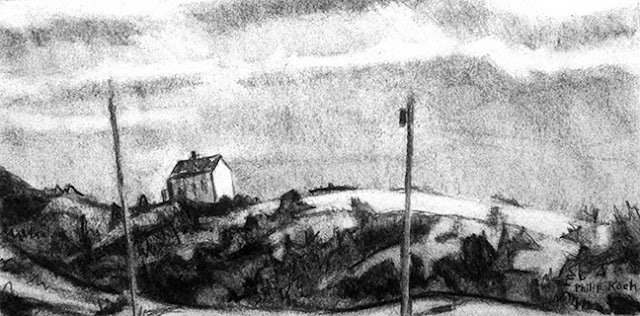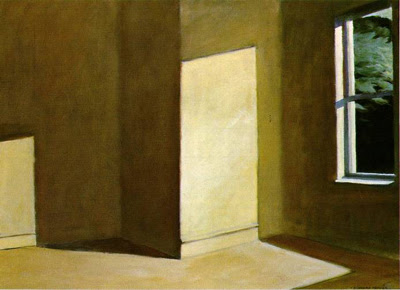Southern Vermont Arts Center
On my way back home from my exhibit at Edgewater Gallery in Middlebury, Vermont, I stopped last week in Manchester, VT at the Southern Vermont Arts Center. I'm glad I did. The place has a drop dead gorgeous setting on an old wooded estate at the foot of a mountain. My friend Christine Neill, a fellow professor with me at MICA and a very fine painter, has an impressive show of her semi-abstract watercolors on display there now.
Above is one of the Center's facilities, the Wilson Museum, which often shows works from SVAC's Permanent Collection. Below is one piece on dispaly, a modest still life by Luigi Lucioni, the Italian born American painter (1900 - 1988) who spent time painting in this part of Vermont. Titled Lemon and Beaker. I fell in love with it.
The painter has the look of a hyper-realist, but if one looks closely one realizes Lucioni was a master at abstract composition. He carefully adjusts the levels of darkness in his shadows to emphasize just his favorite silhouettes. For example, the shadow in the lemon is held to the lighter side to keep the ellipse of the yellow fruit in high contrast against the dark green glass beaker behind it. This is not an accident, but an essential part of the painter's expressiveness.

And here below is a larger oil by Lucioni, Birch Group, that was also on display. The artist seems to be telling us he's discovered some outrageous shapes in this stand of trees and wants us to come over and look at them with him. Here he borrows a lot from the wonderful 19th century French painter Theodore Rousseau, the best of the Barbizon School painters in my opinion, whose work so influenced the early French Impressionists. While very tightly rendered, it has a slightly spooky and other-worldly feeling to it. It's really good.
Below is a big atmospheric oil, Autumn Afternoon, by the 19th century American painter George Inness. Like the Lucioni above it is of a pasture, but it couldn't feel more different. Where Lucioni celebrates crisp, hard edges and clear silhouettes, Inness plunges in just the opposite direction. Just where the clouds stop and the trees begin is a obscured from us, which is just how he wants it. Often for Inness reality seems more about interconnectedness and the merging together of once separate things. It's a different side of reality than where Lucioni lives. We need to have both kinds of paintings.
And below is Silver Sea by the Frederick Waugh (American, 2oth century). I think his choice of title is exactly the color sensation he was after. One question I had when I first started painting was how do you paint moving water? The answer Waugh seems to tell us is that you don't. Instead you evoke the feeling of flowing water by carefully the choosing flat shapes that suggest that movement best. Look at the vertical wall of light surf that stretches all the way from left to right across the canvas. If you squint your eyes you can see Waugh designs it with an almost architectural feel, employing lots of straight lines along its outer edges.


The Waugh is also a reminder of the power that can lie in restrained color. It's mostly warm and cool greys, artfully played off against each other.
Finally here's an oil by the 20th century American Reginald Marsh, Majorette. It's a painting with more than a touch of humor to it. You get the feeling Marsh really enjoyed painting spheres.






